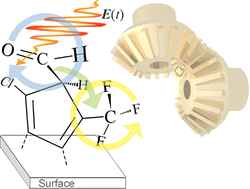Quantum dynamics of light-driven chiral molecular motors
Abstract
The results of theoretical studies on quantum dynamics of light-driven molecular motors with internal rotation are presented. Characteristic features of chiral motors driven by a non-helical, linearly polarized electric field of light are explained on the basis of symmetry argument. The rotational potential of the chiral motor is characterized by a ratchet form. The asymmetric potential determines the directional motion: the rotational direction is toward the gentle slope of the asymmetric potential. This direction is called the intuitive direction. To confirm the unidirectional rotational motion, results of quantum dynamical calculations of randomly-oriented molecular motors are presented. A theoretical design of the smallest light-driven molecular machine is presented. The smallest chiral molecular machine has an optically driven engine and a running propeller on its body. The mechanisms of transmission of driving forces from the engine to the propeller are elucidated by using a quantum dynamical treatment. The results provide a principle for control of optically-driven molecular bevel gears. Temperature effects are discussed using the density operator formalism. An effective method for ultrafast control of rotational motions in any desired direction is presented with the help of a quantum control theory. In this method, visible or UV light pulses are applied to drive the motorvia an electronic excited state. A method for driving a large molecular motor consisting of an aromatic


 Please wait while we load your content...
Please wait while we load your content...